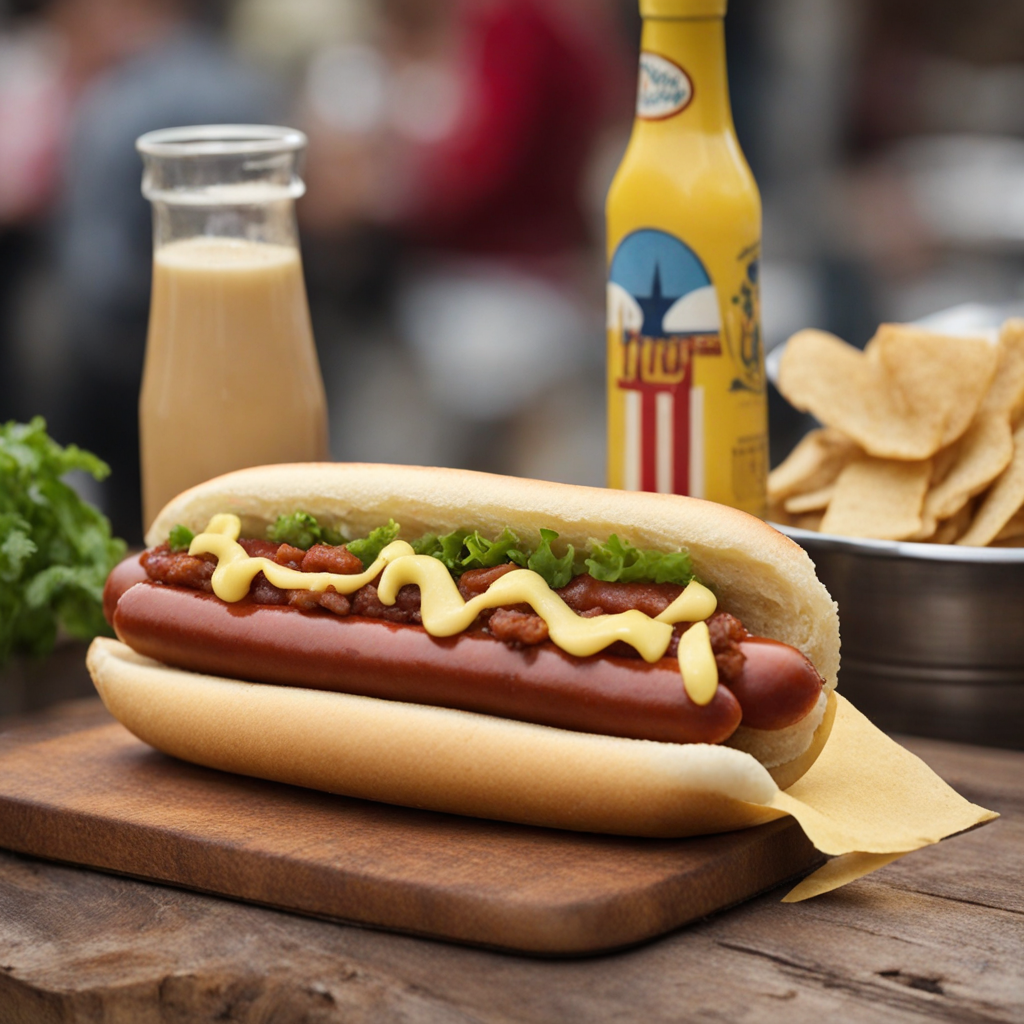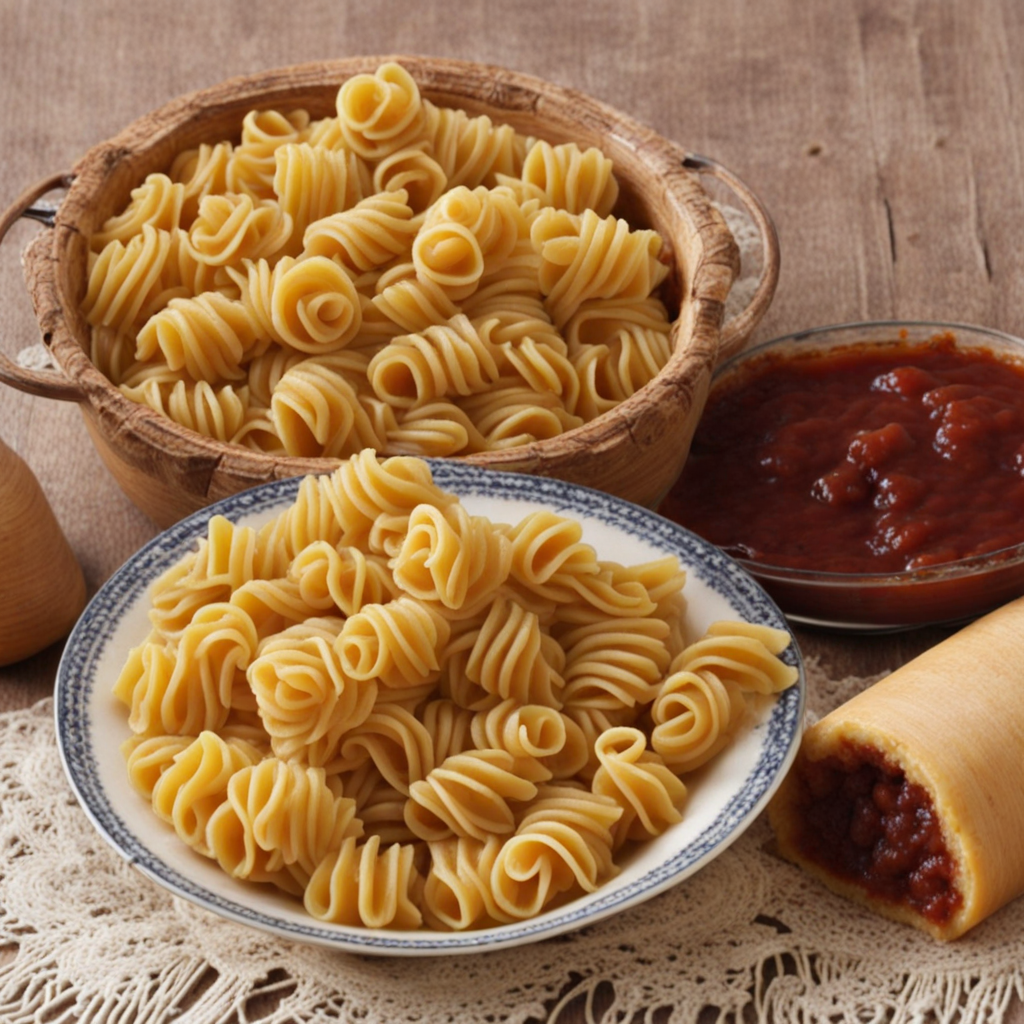Pancho
Pancho is a delightful culinary creation from Uruguay, often enjoyed as a popular street food item. At its core, a Pancho consists of a juicy sausage, typically made from beef, that is grilled to perfection. The sausage is then nestled in a soft, slightly sweet bun, reminiscent of a hot dog but with a distinctly Uruguayan twist. The combination of the savory, smoky flavors of the grilled sausage with the soft texture of the bun creates a satisfying bite that is both comforting and indulgent. What sets Pancho apart from other sausage dishes is its toppings, which can vary widely depending on personal preference and regional influences. Commonly, it is generously slathered with a variety of condiments such as mustard, ketchup, and mayonnaise, offering a rich and tangy contrast to the savory sausage. Additionally, it can be adorned with fresh toppings like diced onions, jalapeños, or even a sprinkle of cheese, adding layers of flavor and texture that elevate the experience. Each bite is a harmonious blend of flavors that captures the essence of Uruguayan comfort food. The experience of enjoying a Pancho goes beyond just its taste; it embodies a vibrant social culture often found in Uruguay. Street vendors serve them at outdoor markets, festivals, and sporting events, making them a popular choice for gatherings and celebrations. Eating a Pancho is not just about satisfying hunger; it’s an experience that invites people to share stories, laughter, and a sense of community. For anyone looking to explore new culinary horizons, indulging in a Pancho offers a delicious glimpse into the heart of Uruguayan cuisine.
How It Became This Dish
The Story of Pancho: A Culinary Journey through Uruguay In the realm of South American cuisine, few dishes encapsulate the spirit of a nation quite like the "Pancho" does in Uruguay. This simple yet satisfying food has become a beloved staple, not just for its taste but for its cultural significance and the memories it evokes among the Uruguayan people. To understand the Pancho, we must delve into its origins, cultural relevance, and its evolution through the ages. Origins: A Fusion of Influences The Pancho, essentially a hot dog served in a soft bun, is a product of various culinary influences that have shaped Uruguayan cuisine. Uruguay, located between Brazil and Argentina, has absorbed diverse cultural elements, largely due to immigration and trade. The hot dog itself is believed to have originated from Germany, and like many food items, it evolved as it traveled across the globe. In the late 19th and early 20th centuries, waves of immigrants, particularly from Italy and Spain, began to settle in Uruguay. With them came their culinary traditions, which mingled with local practices and ingredients, paving the way for the Pancho’s emergence. The term "Pancho" is derived from "Francisco," a common Spanish name. In the context of food, it’s thought to carry an affectionate connotation, suggesting familiarity and comfort. The earliest mentions of the Pancho date back to the early 20th century, when street vendors began selling sausages and other meats in bread buns. The combination of flavors and textures appealed to the working-class populace, who sought affordable yet filling meals during their busy days. The hot dog quickly gained popularity, evolving into what is now recognized as the traditional Pancho. Cultural Significance: A National Icon The Pancho is more than just a snack; it embodies the essence of Uruguayan culture. It is a common sight at street fairs, sporting events, and family gatherings, serving as a bridge between generations. The hot dog symbolizes a shared experience, bringing people together in a communal celebration of food. It is often consumed at barbecues, where it shares the spotlight with asado (barbecue), a cornerstone of Uruguayan culinary identity. In Uruguay, the Pancho is often served with a variety of toppings, adding to its uniqueness. Traditional accompaniments include mustard, mayonnaise, ketchup, and a sprinkle of grated cheese. However, variations abound, with some vendors offering toppings like chopped onions, sautéed peppers, or even a spicy salsa. Each vendor may have their own twist, reflecting their personal style and the preferences of their clientele. The dish also plays a significant role in the country’s social fabric. During major sporting events, particularly football matches, Panchos are often the go-to food for fans, fueling the excitement and camaraderie. Street vendors can be found outside stadiums, ensuring that the delicious aroma of grilled sausages wafts through the air, drawing in crowds eager to indulge. Evolution Over Time: From Street Food to Gourmet Fare As Uruguay has modernized and its culinary scene has evolved, so too has the Pancho. What began as a humble street food has undergone a transformation, with gourmet versions emerging in recent years. Chefs and food enthusiasts have taken the Pancho beyond its traditional roots, experimenting with high-quality meats, artisanal buns, and innovative toppings. In urban areas like Montevideo, food trucks and trendy eateries have embraced the Pancho, reimagining it with gourmet ingredients. From Angus beef sausages to vegan alternatives, the Pancho has adapted to cater to diverse dietary preferences. Toppings have also become more adventurous, with options like avocado, kimchi, or spicy aioli taking center stage. This reinvention has not only elevated the Pancho’s status but has also introduced it to new audiences, including tourists and foodies from around the world. The rise of social media has also played a pivotal role in the Pancho’s evolution. With the proliferation of food photography and online sharing, vendors and restaurants have showcased their unique takes on this classic dish, sparking interest and curiosity. Food bloggers and influencers have helped popularize the Pancho, turning it into a trendy item that reflects the dynamic nature of contemporary Uruguayan cuisine. A Symbol of Resilience and Adaptation Throughout its history, the Pancho has been a symbol of resilience and adaptation. The dish has weathered economic challenges, social changes, and shifting food trends, remaining a constant in the lives of the Uruguayan people. As the country continues to evolve, so too does the Pancho, mirroring the broader narrative of Uruguay’s culinary landscape. In a world increasingly focused on health and sustainability, the Pancho is also adapting to meet modern demands. Many vendors are now offering organic and locally sourced ingredients, emphasizing sustainability in their practices. This shift not only speaks to the growing awareness of food quality but also highlights the importance of community and supporting local farmers. Conclusion: The Pancho as a Culinary Love Letter The Pancho is more than just a food item; it is a culinary love letter to Uruguay’s rich history and cultural identity. It encapsulates the essence of togetherness, nostalgia, and adaptability, serving as a reminder of the simple pleasures in life. Whether enjoyed at a bustling street fair, shared among friends at a barbecue, or savored in a gourmet setting, the Pancho remains a cherished symbol of Uruguayan heritage. As we look to the future, the Pancho will undoubtedly continue to evolve, reflecting the changing tastes and values of society. Yet, its core significance as a beloved national dish will endure, bridging the past with the present and inviting new generations to partake in its delicious legacy. In every bite of a Pancho, one can taste the history, the culture, and the unyielding spirit of Uruguay, making it a true culinary treasure.
You may like
Discover local flavors from Uruguay







